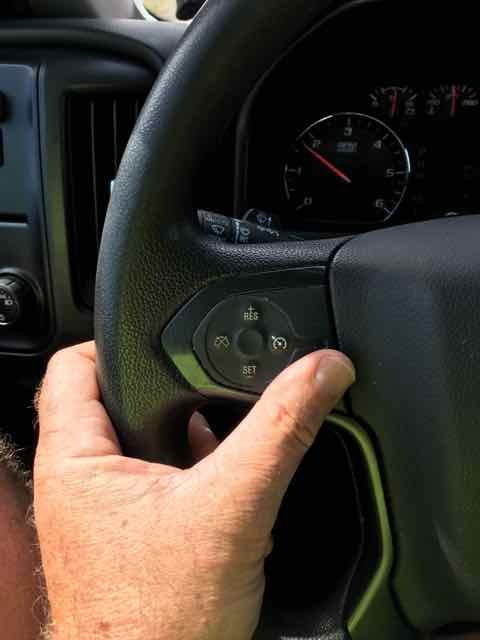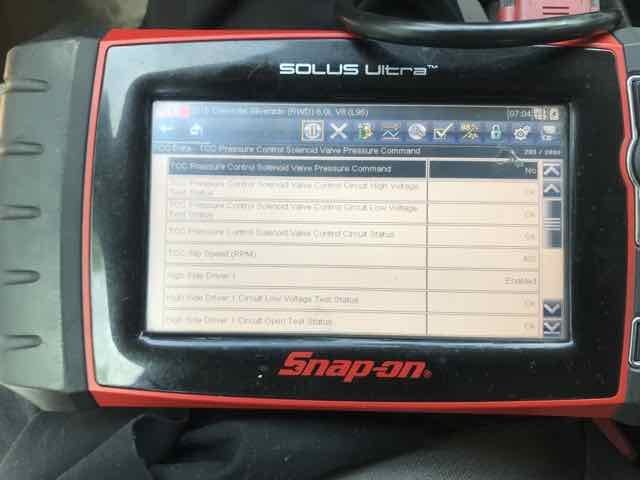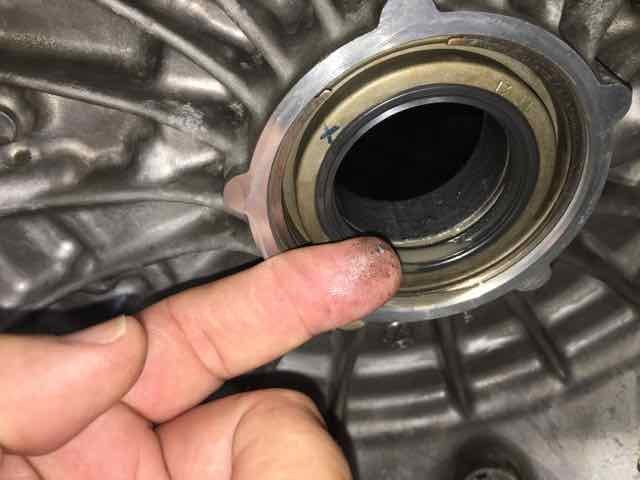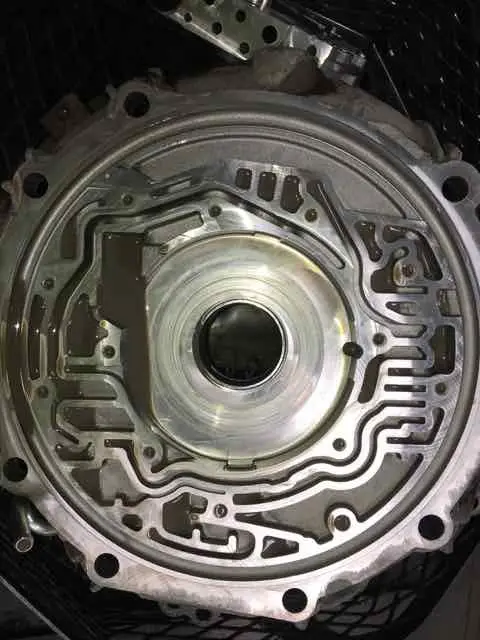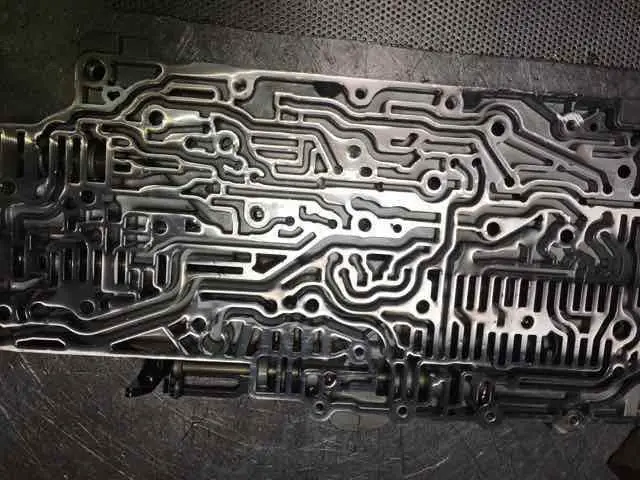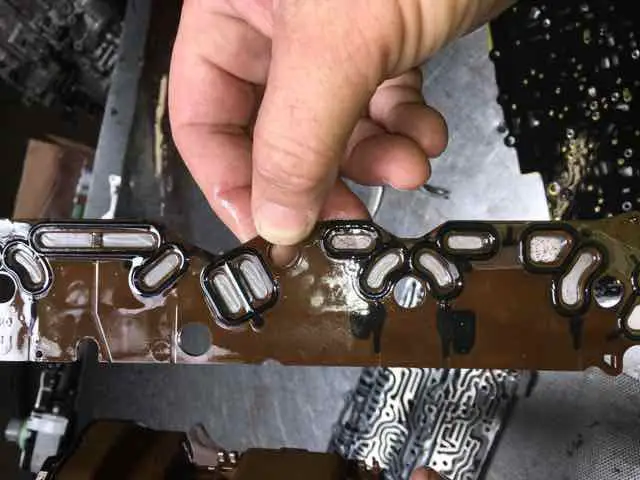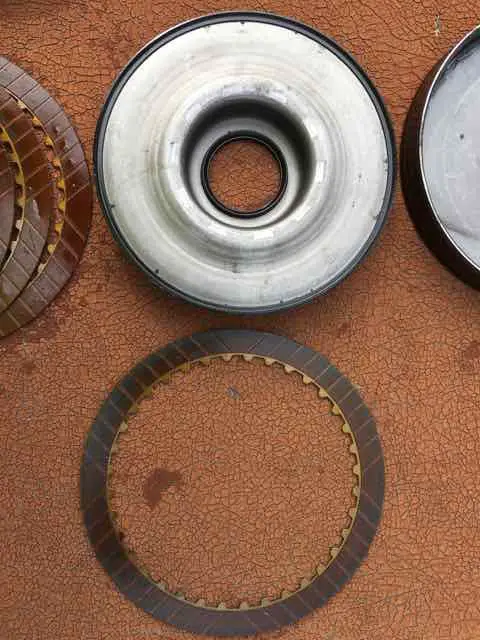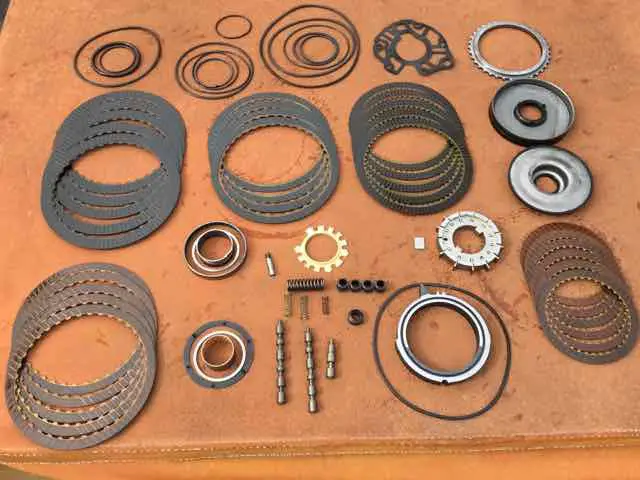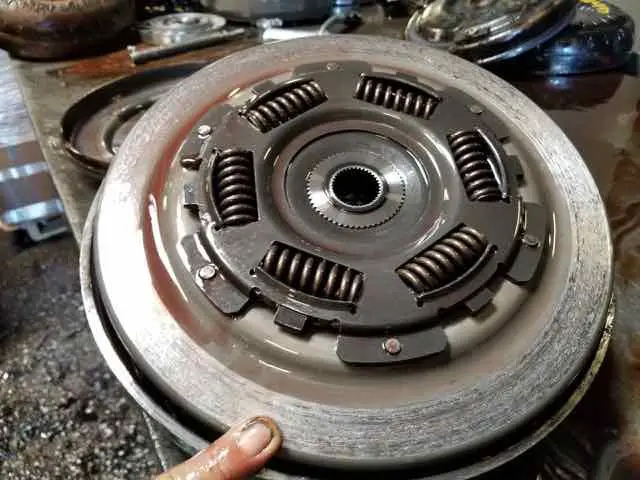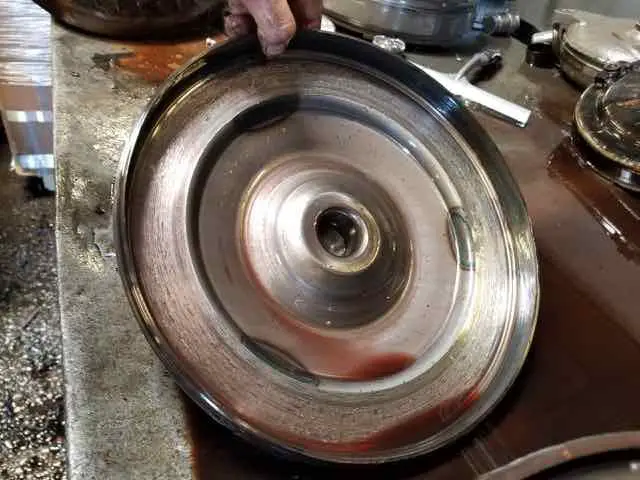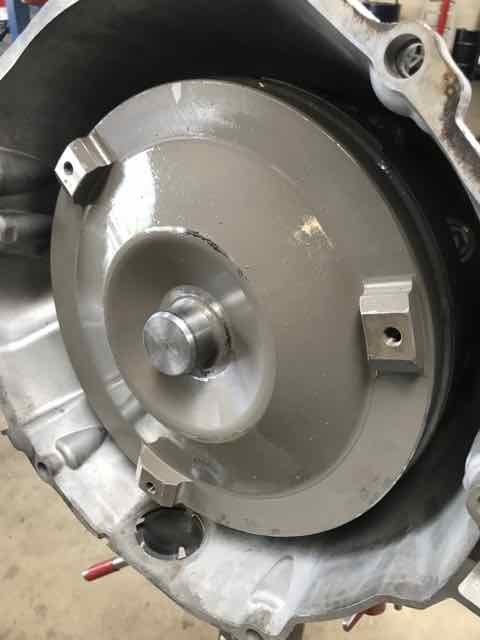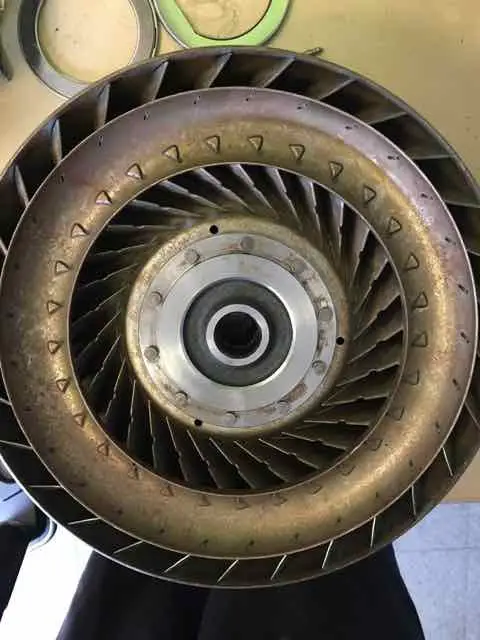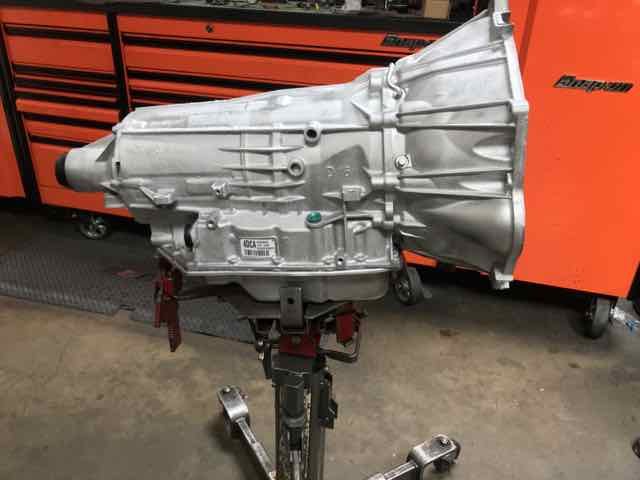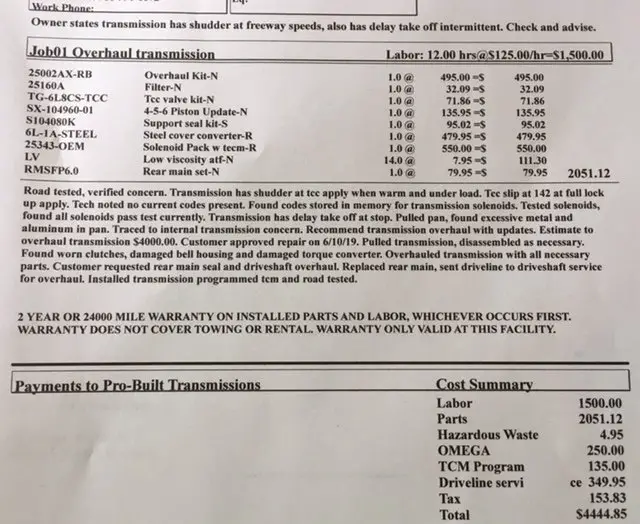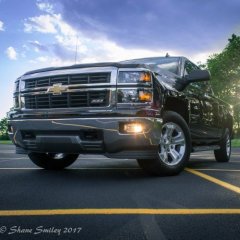Search the Community
Showing results for tags '6l90'.
-
Hello all. I am a semi-frequent user of GMTrucks.com. I’ve had several cosmetic and suspension modifications to my truck (Bilstein 5100’s, roadactive suspension, hellwig rear sway bar, interior mods), nothing major in the drivetrain. I just crossed 50,000 miles, and it looks like yet another TCC failure (first one at 24,500 to 25,000 miles). It’s a 2020 Custom Trail Boss, 4.3. When the first converter failed, they ended up putting 2 thermal bypass valves in it. After the last TBV change, transmission never sees over 150°. What do I need to do to have GM put a better converter in my truck to prevent future hangups (sonnax, maybe)? How should I approach this to ensure I don’t keep losing my truck for weeks at a time? I don’t overload it, I don’t dog it, and the fluid still looks clean (changed with last thermal bypass valve at 30,000 miles, total fluid exchange and filter replacement). It seems like every 25,000 miles, I’ll be back for another torque converter. I don’t haul or tow frequently. When I do, it’s usually no more than a single axle utility trailer with some light household refuse, or an enclosed single wheel with a flat track motorcycle in it. Bike weighs 600 pounds. Tongue weight below the 1,760 payload rating on the sticker in the door. I’ve never gone more than about 40 miles when towing. Usually interstate or rural rustic road (55 mph and no traffic) Any suggestions? I really like the truck and don’t want to trade it in. It suits me for what I need, and I’ve put a lot of time and love into this machine.
-
- torque converter
- 6l90
- (and 8 more)
-
Just finished a Top end on my 6.0 at 191k and made a run to South Dakota dropping off a FWC camper. Loaded my 4K lb. truck camper, making a run to Oregon for a new client opportunity. 40 miles from home felt a slight resonance in the steering wheel while rolling onto an overpass. RPMs at 1800, in 5 gear noted a slight increase in rpm (50) when resonance cycled every 30-40 seconds. Switched manual gear selection to 4th showing 3000 rpms and resonance stopped. Knowing the climbs ahead, 81 miles out, turned around and headed home. Took the truck to the shop, gave a detail report. Shop confirmed my observations and pulled the pan. I’ll update the site and detail the repair. 15k miles on third transmission filter change. Pan showing metal bits and magnet covered as well. Shop suspects a torque converter fail.
-
I sell, fabricate, deliver, install and train workers how to use my packaging lines. In 2015 selected 2500HD WT 6.0 as the platform to use as my office (Truck Camper) and and tow vehicle. It provided great HD service and economical (per mile basis). On a trip to OR noted a resonance with my thumb on the steering wheel, when engine load changed going over an overpass. At first I thought it was roadway groves, but the rhythmic vibration stopped when manually dropping into a lower gear, increasing to 3000 RPM's. Not willing to chance break down north of Mount Shasta, returned home, switch vehicles and headed north. Upon return the rebuild search began. Deep dived into transmission repair cave and almost selected a remanufacture unit from Certified Transmission but learned shops are under no obligation to use their products and there's limit participation on the left coast. Most shops refuse to install a third party transmission citing warranty issues. Finally settled on a local shop in West Sacramento that rebuilds your transmission to the level you want. As a bonafide cave dude wanting to understand the how transmissions work, why they fail and how to repair, called (late Friday) Pro-Built Transmission and spoke to Don the owner. I outlined in detail what the problem was, and through a series of questions from Don about the trucks' service history and how I use it, he was confident what the problem was. Arrived two hours late from my Monday 8 am appointment, Don pulled me through (no signage stating for insurance purposes you can see what we're doing to your ride gate) his shop showing various components, their failure points and although the 6L90 is a simple transmission pointed out common failure points. He showed various 6L90's requiring rebuild, some under 60K miles, and could not believe mine made it to 194K. I relayed after the first transmission filter change, started pulling 5.5 quarts out and replacing every other oil change, in other words, a poor man transmission flush. My reasoning was pay 25 dollars instead of $250 for a complete flush. Don smiled and said that explains it, noting above all else, fluid change saves transmissions. Satisfied Don wasn't a hack, dropped off the key and within an hour, after a test drive and noting data stored in in codes sent me this. I knew it was bad and knowing a bottle of shudder stop wasn't gonna fix this, authorized repair. With high mileage, I asked about universal joint replacement, Don relayed he had a shop that could replace joint, balance the driveshaft and check the center bearing. Also since transmission was removed, and although showing no signs of leakage, had him replace the rear oil seal as well. Don pulled the transmission and confirmed what he suspected, torque converter friction plate failure. The metal on metal grind produced fine grains that worked its way pass the bell hosing bearing and through the pump. Damage continued through the valve body and solenoid pack (TCM). Solenoids contaminated Note the metal grit in the screen on the right. What was unexpected was the metal grinds didn't make to the clutch packs. After 194K miles, 90% were still serviceable with some showing wear on the outer ring. What's interesting with GM is, instead of applying full pressure to the clutch plates, they control the amount of pressure applied. The black rubber ring on the piston drum engages the plate outer section. This accounted for the most wear on the clutch plate. Don showed how the replacement piston drum engages the full surface of the plate; provides a sharper shift and lowering the wear. THE FIX. Drive shaft showed the center bearing was bad and was along with universal joints replaced. Don sent the pump face (forgive if I don't name the parts correctly) to be machined smooth (8-9 thousandths). He switched solenoid rods from alloy to steel, and spoke about the OME cost. Chevy spends perhaps 50 cents on alloy rod where as three steel one cost him $80.00. He installed a new pump and higher valve pressure components. Here's a picture of some parts replaced in my 6L90. Don sent out the torque converter to another shop. They split it open and here's the condition. Don then explained his vendor replaces the back half (part the friction ring presses against) with a thicker (1/4 inch instead of the 1/8 inch) material machined from a billet. This handles heat better and prevents the converter material from warping. They also flash braze vane tabs to prevent movement (picture of open converter is not mine) If you get a good shop and can wait four days, one can retain the original unit and get upgraded parts. Note the remanufacturing industry is designed for a quick turnaround for transmission shops. They cite a higher level of expertise, however the reality is they created a process based on volume allowing a price point favorable to the transmission shops. Nothing wrong with that and note I wanted to retain my original transmission. Programming Invoice. Yes its high, but keep in mind two other shops were involved, addition work was completed and Don took time to educate me on the transmissions, AND its a tax write off. In the final analysis and under heavy duty conditions, if you have a 6L90 strapped to a 6.0 and do fluid changes, your transmission will survive to 150K miles. If I had a better understanding of transmissions when observing the gray paste material surrounding the pan magnet at the last transmission filter change, I could minimize cost with just a torque converter change. As for this repair, (most expensive during ownership) it cost me .0229 per mile. This and the top end rebuild posted earlier, gives a total cost of $5944.85, (.03 cents per mile) returning my truck to service, hopefully getting another 150k miles. Test drove my truck and report shifts are crisper with the only change being when going over overpasses, and sensing the torque change, rpm will drop 25-50 rpms and return on completing the elevation change. Next week I'll go up the Grapevine with a 4k pound truck camper and report how she does.
-
Well, seeing as how I can't find much on this subject no matter what forum I go to, why not try to start the discussion here and see what kind of following I can get and see where we end up. If you're reading this thread, chances are you have thought about modifying or swapping out your current transmission in your 2014+ GM truck. In my case, I don't mind my 6L80 in my truck. It does fine for what I do right now and it's holding up just fine, but I think the big issue is when you start to search for big power (like I'm starting to do), that 6L80 is not going to hold very much (or so we think). Now, let's all face it. We've seen posts after posts, comments after comments, photos, videos, etc. of guys with built motors with turbos or prochargers shooting down the quarter mile in search for the best time on these 6L80s. Some say they're completely stock, others have them built, and we all ask ourselves the same question: Reliability. How well are these transmissions going to hold up to the abuse on the track? Especially if you want to make it a fast street/strip truck and drive it back home to the garage afterwords. We know for a fact that 6L90s can hold quite a bit of power. Even though I've mostly seen it in Camaro ZL1 applications, there is a guy on YouTube (GuitarmaggedonZL1) who is running a stock 6L90 on stock converter making 1000HP (give or take on an unloaded dyno) and the transmission hasn't puked all over the ground just yet. (Exaggeration, I know.) So, needless to say, a 6L90 swap sounds nice, at first... After you figure the extra length and weight (and in my case, relocation of the transfer case and getting custom driveshafts made), it starts to look a bit unpromising, but still not out of the ball park yet since it will be able to handle the power some are seeking, but where these newer transmissions lack significantly if you want to do boosted applications at the track (or even just launch control on N/A), no one has developed a transbrake. Very, very few forums are talking about this, and only one video exists of a guy in his BMW testing out a transbrake on a 6L80/6L90, and who knows how reliable it is. So, now, you start to think: Well, gee. What can I do now? How about a TH400 or 4L80e swap? So far, I've seen few posts on that as well. No one is talking about it, and I think the biggest problem people seem to be facing is the new PCM: E92. Also possibly the fact that the TCM on the newer transmissions is inside the transmission and whatnot, but whether that plays a part in this, I don't know yet. Now, adapting a TH400 or 4L80e can be done (most likely with a different bellhousing since the bolt holes are in a slightly different spot), but you run into the issue of getting it to speak/cooperate/communicate with the new E92, which I don't think anyone has tried. The only video I've seen of anything working in this application was on a 1320Videos video with a Nova where they were using an LT4 long block (built motor to 388 C.I.) and twin turbos, and it had a powerglide in it. Don't know if it was a manual valve body or computer-controlled, but what I do know is that they used the factory computer to run the DI injection system and piggybacked the rest to an MS3 Pro. After dealing with some issues, they were able to make that thing boogy to a 9 second pass at 148mph. So, these engines have potential to haul ass, but we just haven't figured out how to crack the system. So, at this point, I'll just leave what I've discussed here and see where the thread goes from here, and I'm hoping people chime in and vendors are watching/listening. Even though the demand isn't hot for it right now, there's going to be a surge for good transmissions when people can buy these trucks/cars/motors/transmissions for pennies on the dollar. Unfortunately, I feel like we'll have to wait that long in order to see results, but oh well. Just to give you guys an example: In the next year or two (2019 or 2020), I'd like to go turbo with my truck. (Doing all the supporting mods before going there minus built bottom end until I see where I can get with stock bottom end before sending a rod through the block or oil pan) Ideally, it'd be best to have a transbrake in that application with 2-step, but can't do it on the new transmissions. So, 4L80 seems to be the option, but I can't do that either because no one supports adapters or harnesses to make them work with the new motors/ECUs. That's the boat I'm in. I like to research everything before I go whole hog into something. Risk assessment, I guess.



